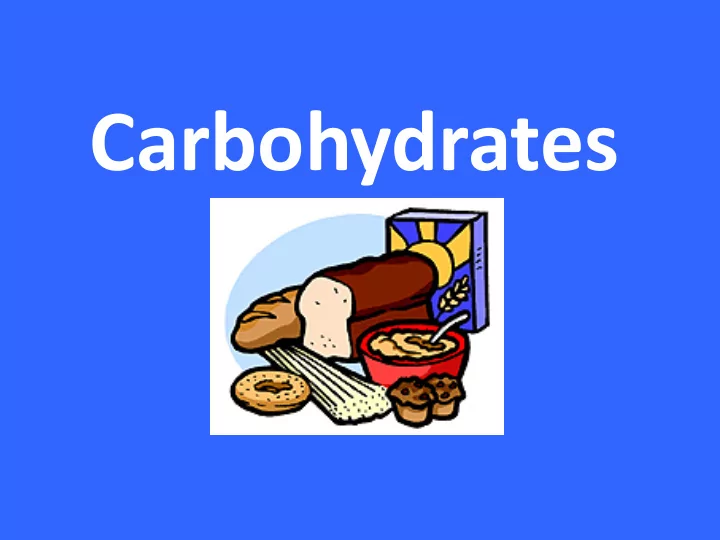

Carbohydrates
Carbohydrates • Commonly known as sugars and starches • Composed of carbon, hydrogen and oxygen atoms
Monomers and Polymers of Carbohydrates • The monomer of a carbohydrate is called a monosaccharide (“one sugar”) • Monosaccharides are commonly known as simple sugars • Polymers of carbohydrates include disaccharides and polysaccharides
Monomers and Polymers of Carbohydrates
Molecular Formula for Carbohydrates • The molecular formula for a 6-carbon simple sugar is C 6 H 12 O 6 • The ratio of hydrogen atoms to oxygen atoms in a carbohydrate is 2:1 or 2 hydrogen atoms for every one oxygen atom
Simple Sugars • The 6-carbon sugars are the most common sugars in nature • Many other simple sugars also exist, for example, the sugar molecules found in DNA and RNA
Chemical Names for Sugars • The chemical names for sugars end in -ose • Examples include: glucose, galactose and fructose
Isomers • Isomers are molecules that have the same molecular formula but different structures (arrangement of atoms is different)
Reaction - Dehydration Synthesis • Monosaccharides are joined together to form carbohydrate polymers by dehydration synthesis
Disaccharides • Maltose is a disaccharide composed of two glucose molecules
Disaccharides • Sucrose (table sugar) is a disaccharide composed of one glucose molecule and one fructose molecule
Disaccharides • Lactose (milk sugar) is a disaccharide composed of one glucose molecule and one galactose molecule
Polysaccharides • Polysaccharides consist of many monosaccharides bonded together by dehydration synthesis
Common Polysaccharides • Common polysaccharides include glycogen, cellulose, chitin and pectin – Glycogen – animal starch, stored in the liver and muscles – Cellulose – composes the cell walls of autotrophs (i.e. plants) – Chitin – composes the exoskeleton of arthropods (crabs, lobsters, insects, etc.) – Pectin – found in the skin of fruit
Glycogen • A polysaccharide commonly known as animal starch - polymer of glucose molecules • Serves as an energy storage molecule in the liver and muscles
Cellulose • A polysaccharide commonly known as plant starch - polymer of glucose molecules • A tough, fibrous material found in plant cell walls
How are carbohydrate used by the cells of living organisms? • Used as fuel for cells (glucose) • Used as fuel storage for cells (glycogen) • Plays a structural role in cells (cellulose and chitin)
You Are What You Eat • Healthy food sources for carbohydrates include: fruits, vegetables, pasta, bread, whole grains and beans
Reaction - Hydrolysis • Polymers are broken down into monomers by hydrolysis • These reactions are usually facilitated by enzymes
Recommend
More recommend